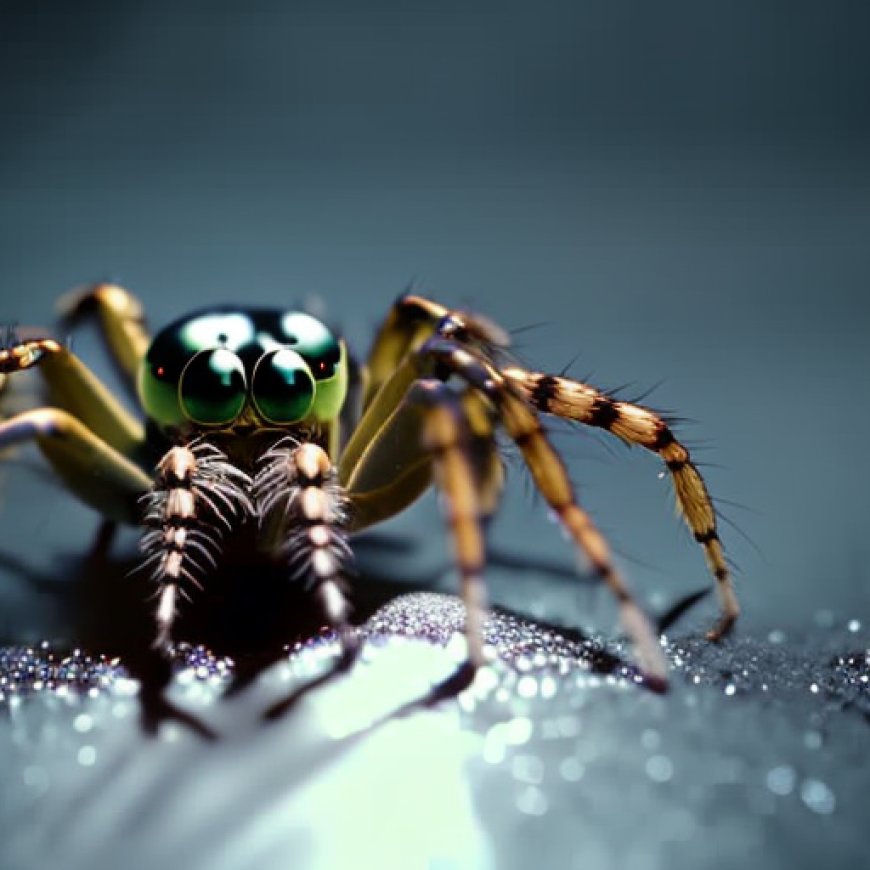Some spiders can transfer mercury contamination to land animals
Some spiders can transfer mercury contamination to land animals Science Daily


Sustainable Development Goals (SDGs) and Mercury Contamination
Introduction
Mercury contamination in waterways poses a significant threat to both aquatic and terrestrial ecosystems. In particular, spiders living along lakeshores and riverbanks have been identified as potential indicators of mercury pollution. Researchers have found that these shoreline spiders can transfer mercury contamination from riverbeds to land animals, such as birds, bats, and amphibians, through their diet of aquatic insects. This study, published in ACS’ Environmental Science & Technology Letters, aims to assess the presence of mercury in shoreline spiders’ tissues and investigate the connection between mercury pollution in water and land animals.
Methods
The researchers collected long-jawed spiders from two tributaries to Lake Superior. They also sampled sediments, dragonfly larvae, and yellow perch fish from these waterways. The team analyzed the mercury sources in these samples, including industrial pollution, precipitation, and soil runoff. By comparing the mercury levels in sediments and various organisms, the researchers aimed to establish how mercury contamination moves from aquatic environments to terrestrial wildlife.
Results
The study found that the origin of mercury in sediments was consistent throughout the aquatic food chain in wetlands, reservoir shorelines, and urban shorelines. When sediment contained a higher proportion of industrial mercury, the dragonfly larvae, spiders, and yellow perch tissues collected from these areas also exhibited higher mercury levels. This indicates that long-jawed spiders can serve as indicators of mercury pollution and provide insights into the sources of contamination in the environment. The researchers emphasize that these findings have implications for management decisions and monitoring of remediation activities.
Comparison of Arachnid Species
In addition to long-jawed spiders, the researchers also collected and analyzed tissues from fishing spiders and orb-weaver spiders. The study revealed variations in mercury sources among the three taxa, which can be attributed to differences in their feeding strategies. Fishing spiders primarily hunt on land but near water, while orb-weavers consume both aquatic and terrestrial insects. However, it is the long-jawed species that heavily rely on adult aquatic insects for their diet. Therefore, while long-jawed spiders can effectively monitor aquatic contaminants, not every species living near the shore is a reliable sentinel for mercury pollution.
Conclusion
This study highlights the role of shoreline spiders, particularly long-jawed spiders, in indicating mercury contamination in both water and land ecosystems. By studying the mercury levels in these spiders’ tissues, researchers can gain valuable insights into the sources of contamination and inform management decisions. These findings contribute to the Sustainable Development Goals (SDGs), specifically Goal 14: Life Below Water and Goal 15: Life on Land, by addressing the issue of mercury pollution and its impact on aquatic and terrestrial biodiversity.
The authors acknowledge funding from the U.S. Geological Survey Environmental Health Program and the U.S. Environmental Protection Agency Great Lakes Restoration Initiative.
SDGs, Targets, and Indicators
| SDGs | Targets | Indicators |
|---|---|---|
| SDG 14: Life Below Water | Target 14.1: By 2025, prevent and significantly reduce marine pollution of all kinds, particularly from land-based activities, including marine debris and nutrient pollution | Indicator not mentioned in the article |
| SDG 15: Life on Land | Target 15.1: By 2020, ensure the conservation, restoration, and sustainable use of terrestrial and inland freshwater ecosystems and their services, in particular forests, wetlands, mountains, and drylands, in line with obligations under international agreements | Indicator not mentioned in the article |
| SDG 3: Good Health and Well-being | Target 3.9: By 2030, substantially reduce the number of deaths and illnesses from hazardous chemicals and air, water, and soil pollution and contamination | Indicator not mentioned in the article |
1. Which SDGs are addressed or connected to the issues highlighted in the article?
The issues highlighted in the article are connected to SDG 14: Life Below Water and SDG 15: Life on Land. The article discusses how mercury contamination in waterways can be passed along the food chain to land animals through spiders living on lakeshores and riverbanks.
2. What specific targets under those SDGs can be identified based on the article’s content?
Based on the article’s content, the specific targets that can be identified are:
– Target 14.1: By 2025, prevent and significantly reduce marine pollution of all kinds, particularly from land-based activities, including marine debris and nutrient pollution.
– Target 15.1: By 2020, ensure the conservation, restoration, and sustainable use of terrestrial and inland freshwater ecosystems and their services, in particular forests, wetlands, mountains, and drylands, in line with obligations under international agreements.
3. Are there any indicators mentioned or implied in the article that can be used to measure progress towards the identified targets?
No specific indicators are mentioned or implied in the article that can be used to measure progress towards the identified targets.
Note: The article does not provide specific indicators related to the targets mentioned.
Behold! This splendid article springs forth from the wellspring of knowledge, shaped by a wondrous proprietary AI technology that delved into a vast ocean of data, illuminating the path towards the Sustainable Development Goals. Remember that all rights are reserved by SDG Investors LLC, empowering us to champion progress together.
Source: sciencedaily.com

Join us, as fellow seekers of change, on a transformative journey at https://sdgtalks.ai/welcome, where you can become a member and actively contribute to shaping a brighter future.







